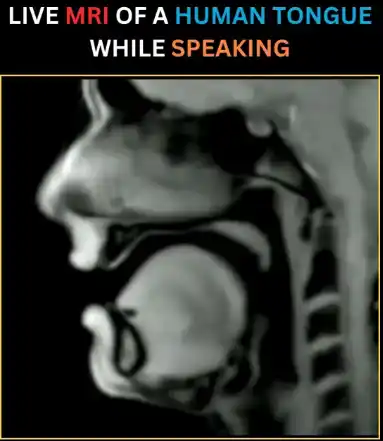Live MRI of Human Tongue While Speaking: A Fascinating Insight into Speech Mechanics
In the realm of medical imaging, Magnetic Resonance Imaging (MRI) has revolutionized the way we understand the human body. But have you ever wondered how your tongue moves when you speak? A live MRI of the human tongue while speaking provides a mesmerizing and detailed visualization of the intricate mechanisms behind speech production. This groundbreaking technique has opened new avenues for research in linguistics, medicine, and speech therapy.
What Is a Live MRI?
MRI is a non-invasive imaging technology that uses powerful magnets and radio waves to create detailed images of the internal structures of the body. A live MRI, also known as dynamic or real-time MRI, captures images in rapid succession, allowing researchers and clinicians to observe moving parts of the body in real time.

When applied to the human tongue during speech, live MRI provides an unparalleled look at how this vital muscle coordinates with other structures in the mouth and throat to produce sounds and words. This technique captures movements at a rate of 10 to 30 frames per second, offering a near-instantaneous view of speech mechanics.
The Mechanics of Speech: What the MRI Reveals
The human tongue is one of the most flexible and agile muscles in the body. It plays a critical role in shaping sounds, forming words, and articulating speech. Through live MRI, researchers can observe:
- Tongue Placement and Movement: The precise positioning of the tongue during the articulation of different sounds, such as vowels and consonants.
- Coordination with the Jaw and Lips: How the tongue works in harmony with other oral structures to create seamless speech.
- Airflow Dynamics: The role of the tongue in directing airflow, crucial for the production of specific phonetic sounds.
- Speech Disorders: Anomalies in tongue movement that could indicate speech disorders or other medical conditions.
Applications of Live MRI in Speech Research
- Understanding Speech Disorders
Live MRI is an invaluable tool for studying speech disorders, such as stuttering, dysarthria, and apraxia. By analyzing tongue movement in real time, researchers can pinpoint the root causes of these disorders and develop targeted therapies. - Language and Linguistics
Linguists use live MRI to study how different languages utilize the tongue and oral structures for speech. For example, the articulation of “r” sounds in English differs significantly from other languages, a phenomenon that can be analyzed in detail using this technology. - Speech Therapy
Clinicians can use live MRI to design personalized speech therapy programs by visualizing and correcting abnormal tongue movements. - Prosthetics and Surgery
In cases of reconstructive surgery or the use of oral prosthetics, live MRI helps evaluate the effectiveness of interventions and aids in rehabilitation.
A Visual Marvel: What Makes the Video Fascinating
Live MRI videos of the tongue



